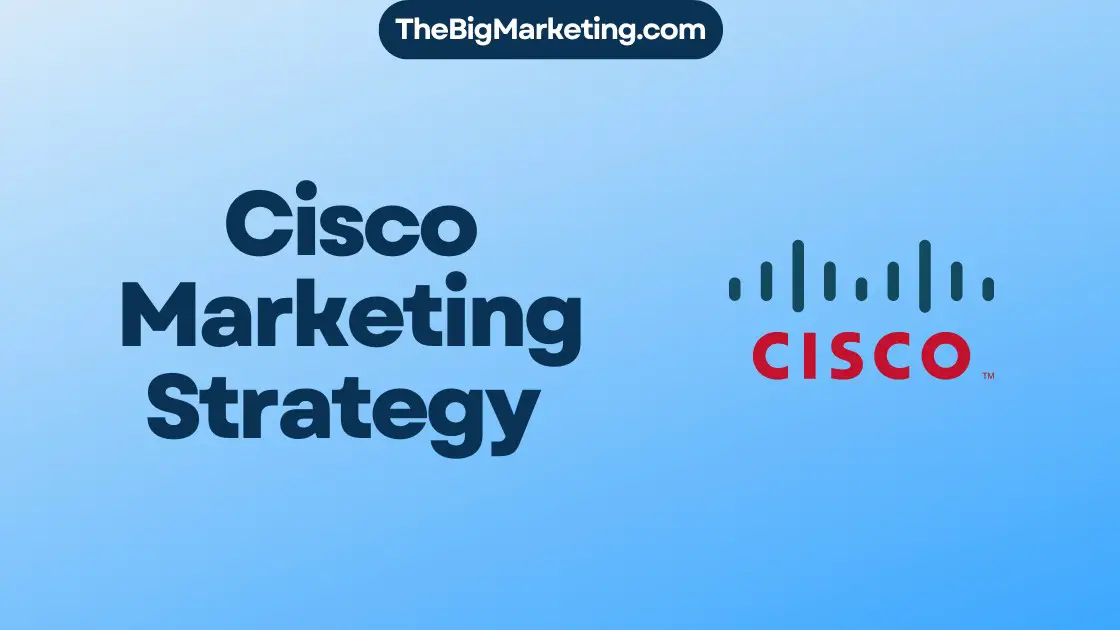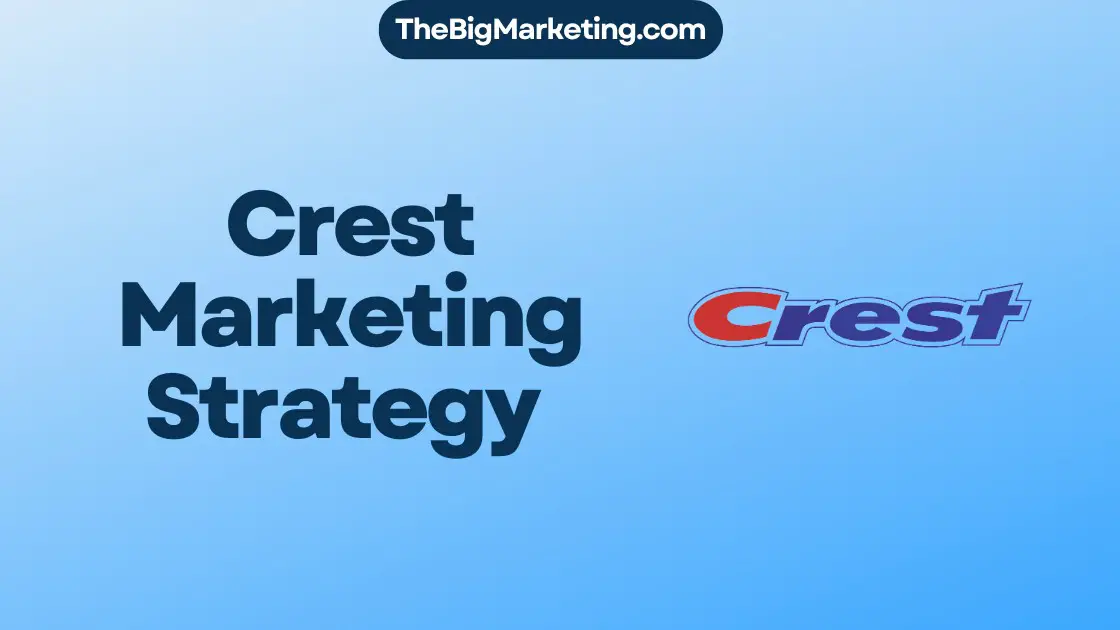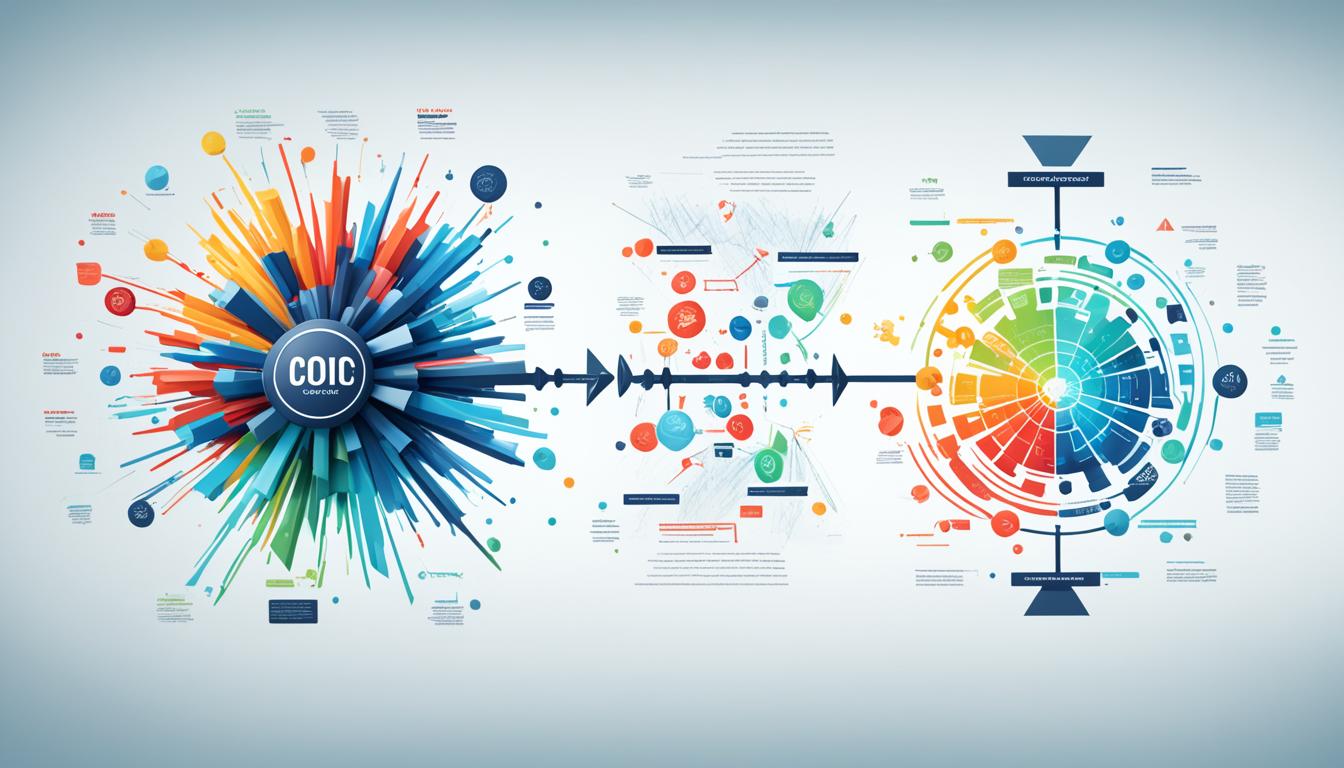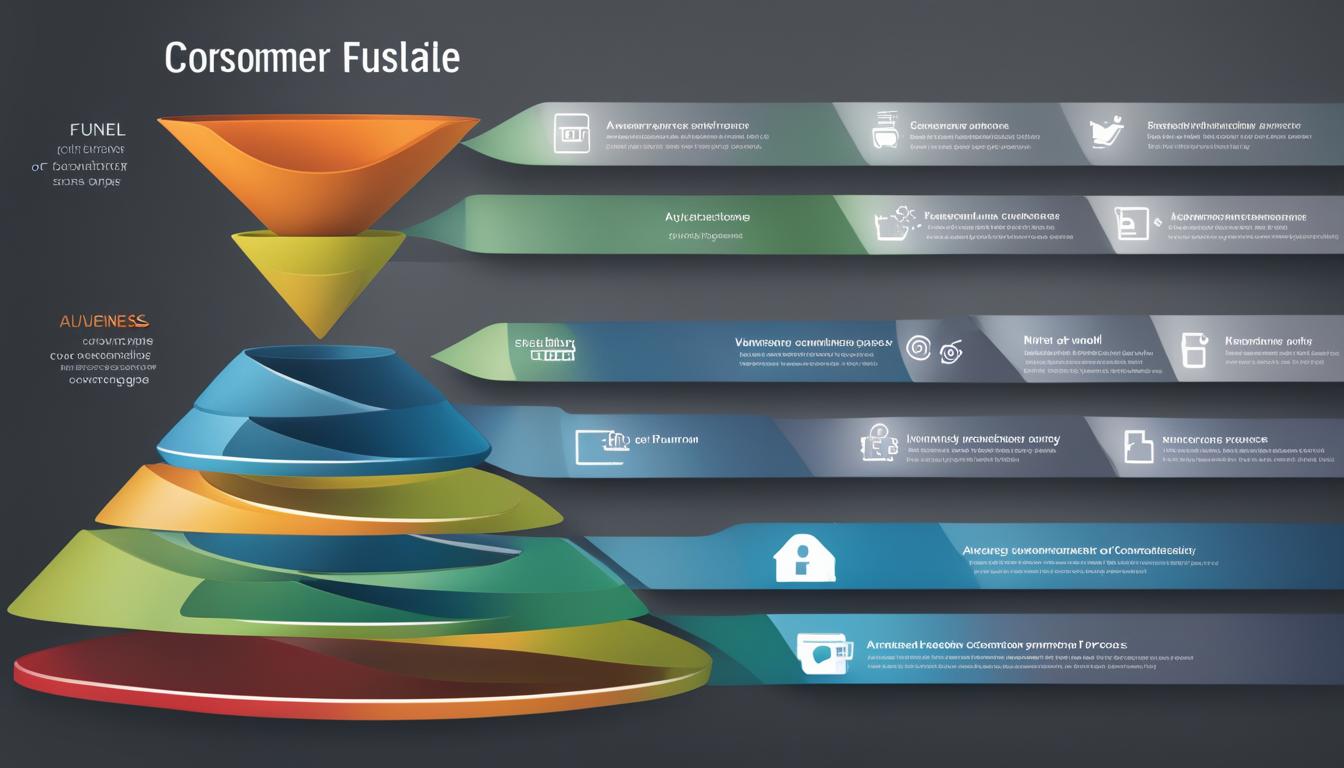Allianz, a leading insurance company, faced significant challenges in the evolving insurance industry in Argentina. To address these challenges and stay competitive, Allianz implemented a comprehensive marketing strategy in 2024. This case study explores Allianz’s marketing approach, tactics, and brand positioning, as well as their digital marketing strategy and target audience segmentation.
To begin, Allianz recognized the importance of evaluating their IT architecture to achieve more efficient ways of doing business and support their organizational strategy. By migrating to a Cloud Native architecture based on best practices, Allianz aimed to streamline their IT systems and enhance overall efficiency.
Key Takeaways:
- Allianz faced challenges in the insurance industry in Argentina.
- They evaluated their IT architecture and migrated to a Cloud Native architecture.
- Allianz implemented a new marketing approach to align with their evolving strategy.
- They launched targeted marketing campaigns to reach their desired audience.
- Allianz conducted a competitive marketing analysis to inform their strategy.
Challenges in the Insurance Industry
As the insurance industry continues to evolve, companies like Allianz face numerous challenges in staying competitive and meeting the changing needs of customers. These challenges are particularly pronounced in Argentina, where the insurance industry is undergoing significant transformation.
One of the key challenges that Allianz faced in the insurance industry in Argentina was the need to adapt their marketing strategy to keep pace with evolving market dynamics. Rapid technological advancements, changing customer preferences, and increased competition necessitated a fresh approach to marketing.
To tackle these challenges, Allianz recognized the importance of embracing innovation and leveraging digital marketing strategies. By understanding the evolving landscape of the insurance industry, Allianz was able to identify opportunities for growth and reimagine their marketing tactics to better engage their target audience.
Allianz’s marketing team undertook a comprehensive analysis of the insurance industry evolution in Argentina, studying market trends, customer behaviors, and competitive landscape. This analysis helped shape Allianz’s marketing strategy, enabling them to develop tailored campaigns that would resonate with customers and differentiate their brand in the market.
The Importance of Agility and Adaptability
With the insurance industry in a state of constant change, companies like Allianz faced the challenge of remaining agile and adaptable. This required them to continuously evaluate their strategies and tactics, making timely adjustments to align with emerging market trends.
Allianz’s marketing team worked closely with other departments within the organization to ensure their marketing efforts were aligned with the company’s overall goals and objectives. This collaboration allowed them to leverage internal expertise and resources, resulting in a more comprehensive and effective marketing approach.
In addition, Allianz recognized the significance of incorporating customer feedback and market insights into their marketing decision-making process. By listening to the needs and preferences of their target audience, Allianz was able to enhance their marketing campaigns and better address the evolving demands of the insurance industry in Argentina.
Overall, the challenges faced by Allianz and the insurance industry in Argentina propelled them to reassess their marketing strategies and seek innovative solutions. By embracing change, adopting digital marketing tactics, and staying attuned to market dynamics, Allianz successfully navigated the challenges and positioned themselves for continued growth in the evolving insurance landscape.
Evaluating the IT Architecture
Allianz implemented a comprehensive program to evaluate their IT architecture and develop an evolution plan that aligns with their organizational strategy. The primary objective of this initiative was to identify and implement more efficient ways of conducting business, thereby optimizing performance and enhancing the overall efficiency of IT systems.
As part of the evaluation process, Allianz conducted a thorough IT architecture evaluation, assessing the existing infrastructure, systems, and processes. The evaluation aimed to identify areas of improvement and potential bottlenecks that hindered operational efficiency and agility.
Based on the findings of the evaluation, Allianz put forward a proposal to migrate to a Cloud Native architecture. This Cloud Native architecture leverages contemporary technologies and embraces Cloud Native best practices to better align with the evolving needs of the business.
The migration to a Cloud Native architecture offers numerous benefits. It enables increased scalability, flexibility, and resilience, allowing Allianz to adapt swiftly to market changes and customer demands. Additionally, it fosters innovation and accelerates time-to-market for new products and services.
By adopting Cloud Native best practices, Allianz can optimize resource utilization, minimize downtime, and improve the overall efficiency of their IT systems. This modern architecture enhances reliability, performance, and security, offering a robust foundation for future growth and innovation.
With a defined IT evolution plan centered around Cloud Native architecture, Allianz is well-positioned to streamline operations, drive technological advancements, and support their overarching organizational strategy.
Comparison of Traditional Architecture vs. Cloud Native Architecture
| Aspects | Traditional Architecture | Cloud Native Architecture |
|---|---|---|
| Scalability | Limited scalability due to hardware dependencies | Highly scalable with automatic scaling capabilities |
| Flexibility | Rigid and difficult to adapt to changing business requirements | Agile and easily adaptable to evolving needs |
| Resilience | Prone to single points of failure and potential system downtime | Enhanced resilience through distributed systems and fault tolerance |
| Innovation | Limited ability to leverage emerging technologies and innovations | Enables rapid adoption of new technologies and promotes innovation |
Allianz Marketing Approach
Allianz Insurance, a global leader in the insurance industry, implemented a fresh and targeted marketing approach to align with their evolving strategy. By repositioning the brand and adopting new marketing tactics, Allianz aimed to effectively reach and engage their desired audience.
The Allianz marketing strategy focused on enhancing brand positioning and creating a strong competitive advantage in the market. Through extensive research and analysis, Allianz identified the key elements that would resonate with their target audience and differentiate them from their competitors.
One of the primary aspects of the Allianz marketing approach was to develop a comprehensive marketing plan that incorporated a blend of traditional and digital marketing strategies. By leveraging various communication channels, including social media, email marketing, and content marketing, Allianz aimed to reach their target market effectively.
Brand Repositioning
As part of their marketing approach, Allianz undertook a brand repositioning effort to establish a clear and compelling brand image. This involved refining the brand identity, messaging, and visual elements to align with the evolving needs and preferences of their target audience.
The brand positioning strategy focused on positioning Allianz as a trusted and customer-centric insurance provider. Through strategic messaging and consistent branding across all touchpoints, Allianz aimed to build a strong emotional connection with their audience and foster long-term customer loyalty.
Targeted Marketing Tactics
Allianz employed a range of targeted marketing tactics to effectively reach their desired audience. This included personalized marketing campaigns, segmented messaging, and tailored content that resonated with specific customer segments.
By understanding the unique needs and preferences of their target market, Allianz crafted targeted marketing messages that addressed their pain points, showcased relevant insurance solutions, and highlighted the value proposition of choosing Allianz.
The Allianz marketing team utilized data-driven insights to optimize their marketing efforts. Through continuous monitoring and analysis of customer behavior, market trends, and competitor activities, Allianz refined their marketing tactics to deliver personalized, timely, and impactful messages that captured the attention and interest of their audience.
Overall, the Allianz marketing approach demonstrated their commitment to staying at the forefront of the insurance industry by strategically positioning their brand and implementing targeted tactics to effectively engage their desired audience.
Allianz Marketing Campaigns
As part of their strategic shift, Allianz introduced a series of innovative marketing campaigns to propel their brand forward and engage their target audience. These campaigns were designed to leverage the power of digital marketing strategies and tactics, aligning with Allianz’s vision for a comprehensive and integrated approach to marketing.
One of the key elements of Allianz’s digital marketing strategy was the utilization of personalized content and targeted advertisements to ensure maximum impact. By analyzing customer data and behavior, Allianz was able to deliver tailored messages to specific segments of their audience, enhancing the relevance and effectiveness of their marketing efforts.
Through the implementation of comprehensive SEO strategies, Allianz aimed to improve their online visibility and increase organic traffic to their digital platforms. This involved optimizing their website content, improving site structure and user experience, and incorporating relevant keywords to enhance search engine rankings.
In addition to digital initiatives, Allianz also integrated offline marketing tactics to create a holistic marketing approach. This included traditional advertising channels such as television, print media, and out-of-home advertising, which were strategically used to complement Allianz’s digital efforts and ensure a wide reach.
By leveraging the power of social media platforms, Allianz engaged with their audience in real-time, fostering brand loyalty and building long-lasting relationships. Through compelling and interactive content, Allianz effectively communicated their brand message and values, resulting in increased brand awareness and customer engagement.
One notable example of Allianz’s successful marketing campaign is their “Protect what matters most” campaign. This campaign utilized emotional storytelling and captivating visuals to convey the importance of insurance in safeguarding one’s loved ones and assets. By highlighting real-life stories, Allianz was able to connect with their audience on a personal level, positioning themselves as a trusted and reliable insurance provider.
Through their strategic marketing campaigns, Allianz has effectively established their brand presence, engaged their target audience, and showcased their commitment to providing personalized and innovative insurance solutions. By combining digital marketing strategies with traditional tactics, Allianz has created a comprehensive marketing approach that resonates with their customers and sets them apart from their competitors.
| Campaign | Description | Outcome |
|---|---|---|
| Protect what matters most | An emotional campaign showcasing the importance of insurance in protecting loved ones and assets. | Increased brand awareness and customer engagement. |
| Smart insurance for a digital world | An innovative campaign highlighting the benefits of Allianz’s technologically advanced insurance offerings. | Elevated brand image as a forward-thinking insurance provider. |
| Invest in your future | A campaign emphasizing the long-term benefits of Allianz’s investment solutions. | Increased interest and engagement from individuals seeking investment options. |
Competitive Marketing Analysis
To gain a competitive edge in the insurance industry, Allianz recognized the importance of conducting a thorough competitive marketing analysis. By evaluating the strategies and tactics of their industry rivals, Allianz aimed to understand the landscape of the insurance market and identify opportunities for differentiation.
This analysis played a crucial role in informing Allianz’s own marketing strategy and tactics. It allowed them to gain valuable insights into the strengths and weaknesses of their competitors, enabling them to refine their own approach and stand out in a crowded market.
Identifying Market Trends and Opportunities
Through comprehensive research and analysis, Allianz delved into the marketing strategies of their competitors, studying their target audience, messaging, branding, and promotional activities. This examination helped Allianz identify emerging market trends and uncover opportunities for growth.
By understanding the marketing tactics employed by their rivals, Allianz was able to devise innovative strategies to effectively communicate with their own target audience.
Analyzing Allianz Competitors
Allianz focused on analyzing insurance industry competitors to gain a deeper understanding of their strengths and weaknesses. This analysis encompassed renowned insurance companies such as MetLife, AIG, and Prudential, among others.
By examining their competitors’ marketing approaches, Allianz could benchmark themselves against industry leaders and identify areas where they could surpass their rivals through superior branding, product offerings, or customer engagement.
The Importance of Differentiation
In a highly competitive market like insurance, differentiation is key. Allianz’s competitive marketing analysis enabled them to pinpoint areas where they could differentiate themselves from their competitors, whether through unique product offerings, personalized customer experiences, or innovative marketing campaigns.
By leveraging the insights gathered from their analysis, Allianz developed a marketing strategy that not only capitalized on their own strengths but also addressed the weaknesses of their competitors.
Outmaneuvering the Competition
Allianz’s competitive marketing analysis provided them with a clear advantage in the insurance industry. Armed with a deep understanding of their competitors, Allianz was able to tailor their marketing efforts to effectively position themselves as a leader in the market.
Through ongoing analysis and adaptation, Allianz continues to stay one step ahead of their competition, ensuring their marketing strategies remain innovative and impactful in an ever-evolving industry.
Target Audience Segmentation
Allianz recognizes the importance of understanding its target audience in order to effectively tailor its marketing efforts. Through target audience segmentation, Allianz identifies specific groups within the insurance industry target market that share similar characteristics and preferences. This segmentation allows Allianz to develop targeted messaging and marketing strategies that resonate with each segment, ultimately increasing the effectiveness of their campaigns.
By analyzing data and conducting market research, Allianz gains valuable insights into the needs, desires, and behaviors of its target audience. This information helps Allianz create personalized marketing experiences that engage customers and prospects on a deeper level.
One example of Allianz’s target audience segmentation strategy is their focus on millennial homeowners. Allianz recognizes that this group has unique insurance needs and preferences, and tailors its messaging to resonate with their specific concerns and priorities. Through targeted campaigns and messaging, Allianz positions itself as the trusted insurance provider for millennial homeowners, building brand loyalty within this segment.
Catering to Different Life Stages
Another aspect of Allianz’s target audience segmentation strategy is catering to different life stages. Allianz understands that individuals have diverse insurance needs at different stages of life, whether it’s starting a family, buying a home, or planning for retirement. By segmenting their target audience based on life stages, Allianz is able to offer tailored insurance solutions and communicate relevant benefits to each group.
Allianz’s target audience segmentation approach extends beyond individual customers to also include business owners and organizations within the insurance industry target market. By understanding the unique needs and challenges faced by different business sectors, Allianz can provide tailored insurance solutions and risk management strategies that address the specific requirements of each industry.
| Segment | Characteristics | Marketing Strategy |
|---|---|---|
| Millennial Homeowners | Young, tech-savvy, aspiring homeowners | Create relatable content through social media platforms and collaborate with influencers popular among this demographic |
| Retirees | Empty nesters, planning for retirement | Develop retirement-focused insurance products and launch educational campaigns to raise awareness about post-retirement financial planning |
| Small Business Owners | Entrepreneurs, start-ups, self-employed individuals | Offer specialized insurance packages tailored to the needs of small businesses, provide industry-specific risk management guidance through digital platforms |
Through target audience segmentation, Allianz ensures that its marketing efforts are optimized to reach and engage the right individuals and organizations within the insurance industry target market. By understanding the unique characteristics, preferences, and challenges of each segment, Allianz is able to deliver personalized experiences and build lasting relationships with its diverse range of customers.
Allianz Marketing Plan
Allianz, a leading insurance company, recognized the importance of a well-defined marketing plan to drive their marketing efforts and achieve their objectives. They developed a comprehensive marketing plan that served as a strategic roadmap for their brand promotion and business growth.
The development of the Allianz marketing plan involved a rigorous analysis of market trends, consumer behavior, and competitive landscape. It incorporated specific goals and objectives to align with the broader organizational strategy.
The marketing plan outlined a range of strategies and tactics to effectively position the Allianz brand in the market and attract the target audience. It considered various marketing channels and platforms to ensure a multi-channel approach that maximized their reach and engagement.
One of the key elements of the Allianz marketing plan was the integration of digital marketing strategies to leverage the power of technology and digital platforms. This included a comprehensive online presence, social media marketing campaigns, search engine optimization, and content marketing.
The Allianz marketing plan also emphasized the importance of customer segmentation and personalization. By understanding their target audience’s needs and preferences, Allianz crafted tailored marketing messages and experiences that resonated with their potential customers.
Allianz Marketing Plan Goals and Objectives
| Goals | Objectives |
|---|---|
| Increase brand awareness | Launch targeted marketing campaigns to reach a wider audience |
| Improve customer engagement | Create interactive content and personalized experiences |
| Drive lead generation | Implement lead nurturing strategies and optimize conversion funnels |
| Enhance brand reputation | Establish thought leadership through thought-provoking content |
| Increase market share | Develop strategic partnerships and expand distribution channels |
Measurement and tracking of key performance indicators (KPIs) were integral to the Allianz marketing plan. It allowed for continuous evaluation and optimization of marketing activities to ensure the plan’s effectiveness and return on investment.
The implementation of the Allianz marketing plan provided a solid foundation for their marketing efforts, enabling them to reach their target audience effectively and achieve their marketing objectives. By consistently refining and adapting their strategies, Allianz remained competitive and positioned themselves for long-term success in the evolving insurance industry.
Bringing the Strategy to Life
Allianz effectively executed their marketing strategy by launching a compelling multichannel engagement campaign. This campaign aimed to activate the brand and implement targeted marketing campaigns, thus driving brand awareness and customer engagement.
Characterizing the Strategy
To personify the strategy, Allianz introduced a character named Alli. Alli perfectly embodied the essence of the marketing strategy and became a recognizable symbol for the brand. With Alli at the forefront, the strategy became relatable and approachable, resonating with both employees and customers.
Omnichannel Communication
Allianz strategically communicated their marketing strategy through various channels, both online and offline. They leveraged digital platforms, such as social media, email marketing, and their website, to reach their target audience effectively. Additionally, Allianz incorporated traditional marketing channels, including print media, television commercials, and outdoor advertising, to create a comprehensive brand presence.
Employee Involvement
Allianz recognized the importance of employee engagement in driving marketing success. They actively involved their employees in the strategy execution process by providing training and resources to ensure that everyone understood and embraced the strategy. By empowering their employees to be brand ambassadors, Allianz fostered a collaborative and unified approach to marketing.
Measuring Impact and Optimization
To gauge the effectiveness of their marketing strategy execution, Allianz implemented robust measurement systems. They tracked key performance indicators (KPIs) such as brand reach, customer engagement, and campaign effectiveness. By regularly analyzing the data, Allianz identified areas for optimization and continuously refined their marketing approach to maximize impact.
Ensuring Brand Activation
Allianz’s brand activation initiatives were crucial to the success of their marketing strategy. Through innovative campaigns, they created meaningful connections with their target audience, fostering brand loyalty and driving customer acquisition. By consistently activating and reinforcing their brand, Allianz positioned themselves as a leading player in the insurance industry.
Measuring Success and Future Plans
Allianz recognizes the importance of evaluating the success of their marketing strategy to ensure continuous improvement and stay ahead in the ever-evolving insurance industry. To accomplish this, the organization has implemented a robust system of metrics to assess the effectiveness of their marketing efforts.
Through careful evaluation and analysis, Allianz evaluates the key performance indicators (KPIs) related to their marketing strategy success. These KPIs include metrics such as brand awareness, customer engagement, lead generation, and conversion rates. By monitoring these metrics, Allianz can gauge the impact and reach of their marketing initiatives, allowing them to identify areas of success and areas for improvement.
Based on the findings from the evaluation process, Allianz formulates future marketing plans that align with their strategic objectives and target audience needs. These plans are developed to build upon the successes of the past and address any gaps or challenges identified during the evaluation stage.
With a focus on continuous improvement, Allianz engages in ongoing refinement of their marketing approach. They adapt their strategies and tactics to leverage emerging trends and technologies, ensuring they remain at the forefront of industry developments. Allianz’s commitment to innovation and evolution is driven by their dedication to providing exceptional value to their customers and staying competitive in the market.
Key Metrics for Evaluating Marketing Strategy
| Metric | Description |
|---|---|
| Brand Awareness | Measures the level of awareness and recognition of the Allianz brand among the target audience. |
| Customer Engagement | Evaluates the level of engagement and interaction between Allianz and their customers through various marketing channels. |
| Lead Generation | Tracks the number of leads generated through marketing activities, indicating the effectiveness of attracting potential customers. |
| Conversion Rates | Measures the rate at which leads or prospects are converted into customers, reflecting the effectiveness of Allianz’s marketing efforts in driving sales. |
Conclusion
In conclusion, Allianz’s marketing strategy in 2024 was built upon a comprehensive approach to address the challenges faced in the evolving insurance industry. This strategy encompassed various aspects, including addressing industry challenges, evaluating the IT architecture, implementing a new marketing approach, and executing targeted marketing campaigns.
The strategy adopted by Allianz focused on addressing the specific pain points and industry dynamics to position themselves for success. The evaluation of their IT architecture allowed for more efficient ways of doing business, while the implementation of a new marketing approach and targeted campaigns ensured effective communication with their target audience.
This comprehensive approach, combined with continuous evaluation and refinement, has positioned Allianz as a formidable player in the evolving insurance industry. By adapting to industry challenges and leveraging their IT infrastructure, Allianz has been able to stay ahead and effectively navigate the changing landscape of the insurance sector. Their commitment to continuous improvement and innovation has allowed them to create a marketing strategy that not only addresses current challenges but also sets them up for future success.






